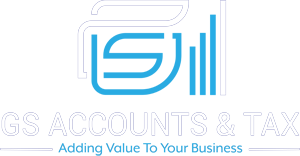Improved outcomes for employers and employees
Wide range of effects
Richard Webb, superannuation lead at CPA Australia, says that although payday super sounds like a fairly simple measure, in reality it is likely to be highly complicated.
For instance, while Single Touch Payroll has streamlined the processes for paying wages to employees and reporting to the ATO, the processes through SuperStream – involving the transmission of super payments between employers, super clearing houses, super funds and the ATO – are convoluted.
“The employer’s contributions data and the super payment itself are actually separated from each other and are not really put together until they make it to the super fund at the other end,” Webb says.
“Unlike Single Touch Payroll, the ATO does not get any verification of the super payment. This means the ATO has no visibility of when an employer has, in good faith, made a super contribution on behalf of their employees.
“The only notification that the ATO gets that a super contribution has been made is when a super fund successfully manages to process that contribution at the end of the chain and then provides information about that to the ATO.
“I expect that, for the government and the super sector to get this together, it will require a reasonable technological build over the next couple of years,” Webb explains.
Progress to date
Westwood says the ATO and Treasury have undertaken several early co-design sessions and a range of consultations as part of the public consultation process.
“We will be engaging with industry representatives further once the government announces the final policy in Budget 2024,” she says.
“Following the announcement of payday super, we are already seeing more employers conduct reviews of their payroll systems to make sure that they have good governance over the payment of their employees’ entitlements and more employers proactively fixing up errors.
“We encourage all employers to use the time before payday super starts to ensure they have good checks and balances in place over their payroll systems.”
Westwood says there has been active input from many stakeholders involved in the change.
“The ATO and Treasury have carefully considered the responses to the public consultation paper process as well as the many co-design sessions.
“Generally, all stakeholders have been supportive of the outcomes that the measure is designed to achieve but have been keen to understand and have input into the detail of how it will be implemented.”
Preparing for the change
Webb says there are several things that accountants will need to do ahead of the change, depending on where they work and their types of clients.
“We would expect that, in the case of large and medium enterprises, they will probably find that their payroll, the organisation that they conduct their payroll through or the software that they use will probably be automated to do this when the new requirements commence,” he says.
“This leaves small employers out a little bit, because a lot of them still do their payroll manually.
“Small business will probably go to their accountants a lot more leading up to the commencement date.
“However, it is also possible that some small businesses are not going to be across it until the new arrangements commence, which means there may need to be some repair work done by accountants to get this right. We would expect there will be teething issues,” Webb explains.
Westwood says accountants will need to stay up-to-date with the changes, so they can provide their employer clients with good advice to ensure they meet their obligations.
“This may include providing advice to help them prepare for the start of payday super, so they have their cash flow plan ready for more regular payments,” she says.
“We’d also encourage accountants to talk to their employer clients about ensuring they have good governance over their payroll processes in preparation for payday super.”
On whether any technology changes will be required, Westwood says these details will need to be determined through detailed design processes.
“It is too early to be able to confirm any need for technology change.”
“The ATO will continue to be responsible for ensuring that employers pay the correct amount of SG by the due date. Over the last few years, the ATO has been increasing its focus on compliance with SG, including improving our ability to use data to identify and take action on unpaid super earlier.
“Payday super will further improve our ability to act early to ensure that employees get the retirement savings to which they are entitled.”
However, Webb adds, there is still not a lot of information from the ATO about how the arrangements will work for employees who have their super contributions paid into self-managed funds.
“They’re really only looking at, I suppose, the 95 per cent of Australians who have contributions paid to APRA-regulated funds at this stage.
“SMSFs do not report contributions to the ATO as frequently as APRA funds, making it hard for the ATO to verify underpayment or late payment of contributions. This means, if you are an employee who contributes to your SMSF and your employer is someone who is likely to pay late, the only real recourse you would have would be to try to talk to the ATO early and provide your own hard evidence to them.”
There are many moving parts to the payday super changes that will require significant discussion, Webb says.
“It really is just a big ball of string that just gets longer and longer the more you try to unravel it.”





